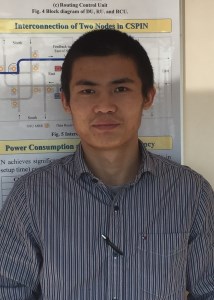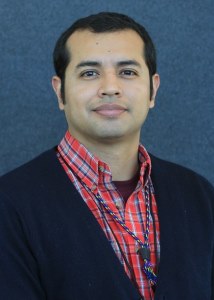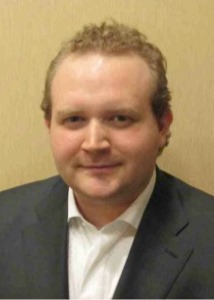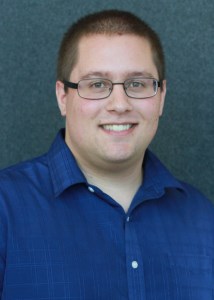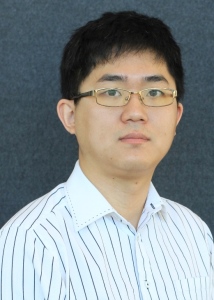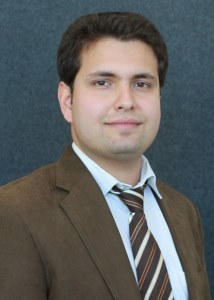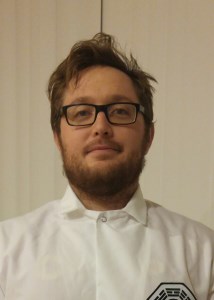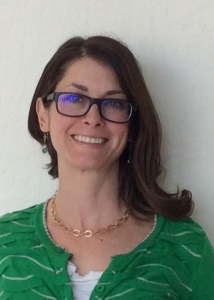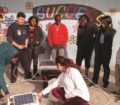Graduate Student Poster Session
Ecological Impacts of a utility-scale photovoltaic panel facility on a creosote-bursage plant community
Authors – Lorenzo Apodaca and Dale Devitt
University of Nevada, Las Vegas
The demand for cleaner sources of energy has been steadily increasing owing to the improved financial viability of green technology and greater acknowledgment of the global effects of fossil fuel consumption. Southern Nevada is poised to become a leading contributor of green energy through the commissioning of public and private lands for solar development. However, there exists a pressing need to better understand the environmental consequences of these facilities as documentation of the impacts of large-scale solar operations on the surrounding desert plant ecosystem is severely lacking. The Copper Mountain 2 (CM2) solar facility in Eldorado Valley, NV utilizes nearly 1.8 square kilometers of photovoltaic panels to generate enough energy to power about 50,000 homes. Currently, the potential impacts on the local environment related to this massive development are being studied from two perspectives: microclimate effects and surface hydrology truncation. A series of meteorological towers and ibuttons are being used to monitor localized temperature changes in CM2 and the adjacent natural habitat as localized climate within the facility may be altering growing conditions in nearby desert plant communities. Because the placement of CM2 represents a major obstacle to established surface water flow, a transect of soil moisture probe access tubes have been placed under creosote plants along a downslope gradient from the facility to observe changes to soil water storage. Individual creosote and bursage plants are also being monitored to study any potential increase in plant stress influenced by the CM2 solar facility. Greater details on the research infrastructure will be presented along with the latest observational data.
Water Usage for Solar Power Development in the Semi-Arid Nevada
Authors – Saria Bukhary, Jacimaria R. Batista, Sajjad Ahmad
Department of Civil and Environmental Engineering and Construction
University of Nevada, Las Vegas
Solar energy is a sustainable and renewable energy source. It is growing in popularity as a clean source of electricity production because the usage of fossil fuel based power technologies has led to elevated pollution levels and CO2 emissions. The water limited arid and semi-arid regions such as southwestern U.S. possess tremendous solar resources for solar power development. Hence understanding water use by solar power industry becomes vital. The main types of solar power technologies namely solar photovoltaics (PV) and concentrated solar power (CSP) have water requirements for washing the panels/mirrors to prevent reduction in efficiency. The CSP technology has additional water requirements for the wet, hybrid and dry cooling processes which is comparable to that in thermoelectric plants. The objective of this study was to analyze the water requirements and availability as well as land usage and reduction in CO₂ emissions due to solar installations by using a system dynamics model. The analysis was performed for the state of Nevada to meet the goals of renewable portfolio standard (RPS) during the period 2010-2030 for different configurations of PV and CSP technologies. Surface water, groundwater and wastewater were investigated as potential sources of available water. It was found that unappropriated groundwater resource has the potential to meet the water demands of solar installations for 2010-2030 under Nevada RPS. Largest amount of water withdrawal was found for CSP Linear Fresnel but the same had the smallest impact based on land usage. Solar PV technology created minimum environmental disruption based on water withdrawals and carbon emissions. For future work, this model can also be implemented in other states using the datasets applicable for that region. This research contributes to objective 1 of nexus project.
Biological Soil Crusts: Limits of Radiation, Desiccation, and Oxidation Tolerance
Authors – Lynda I. Burns and Henry J. Sun
Desert Research Institute
Biological soil crusts in deserts, which are commonly formed by lichens – symbiotic associations between fungi and algae/cyanobacteria – are destroyed during the construction of solar facilities, leading to increased dust emissions. To obtain useful information for crust restoration, we studied in the laboratory the effects of ultraviolet radiation (UV), desiccation, and photochemical oxidation on two common lichens from the Mojave Desert. Following exposure to a given stress in a desiccated state, the specimens were rehydrated while the recovery of chlorophyll fluorescence was monitored. Results show that oxidation is more damaging than UV, which in turn is more damaging than desiccation. Specifically, three days of fumigation in ozone at 68.3 g/Nm3 is lethal or nearly lethal, while UVC irradiation for one week at 38.2 W/m2) only resulted in minor, recoverable injury (this is five orders of magnitude more resistant than E. coli). In contrast, virtually no damage occurred to the lichens even after thirty wet-dry cycles. Our research suggests that amending the soil with reduced organics would help counteract oxidation and thereby facilitate crust restoration.
Renewable Energy from Thermal Electric Generator with Solar Concentration Source
Authors – Carlos Camacho and Shahram Latifi
University of Nevada, Las Vegas
A passive renewable energy system is proposed, with a thermal electric generator (TEG) placed between a hot plate extended from a thermally insulated molten salt tank and a cold plate attached to a sizable passive heat sink. The molten salt is used to keep the hot side temperature at a steady state throughout the day maintaining a large temperature difference between the hot plate and the cooling fins, keeping the efficiency of the TEG higher and stable. Materials, heat transfer analysis, structural design concepts and theoretical TEG power output are explored for project feasibility; with no moving parts, greatly reducing maintenance, compact, quiet, environmentally friendly and lifetime of system is increased, ensuring it as a sustainable renewable energy resource.
Solar energy is concentrated by a 1 m2 Fresnel lens and deposited onto an absorbing material such as Saltstream 700, Halotecnics’ proprietary substance capable of operating temperatures of up to 700 0C; new material research has opened the possibility for commercial viability as efficiency of certain TE materials reach 15% to 20% efficiency, rivaling photovoltaics. Research findings are based on theoretical model analysis constructed using latest material options for a modern approach to sustainable renewable energy resources.
Assessment of Water Droplet Evaporation Mechanisms on Solar Panel Surfaces
Authors – Pranay Chakraborty, Chanwoo Park and Sage R. Hiibel
University of Nevada, Reno
Periodic cleaning of solar panels is of vital importance to reduce electrical output losses caused by dust on the panel surfaces. Prediction of water requirements for cleaning solar panels requires a detailed study, especially for places such as Nevada where water scarcity is of significant concern. A major loss of water during panel cleaning has been attributed to evaporation, however little information is available to help solar facilities predict this loss, and by extension plan for future water needs. As a part of the NEXUS project, a quasi-steady state model to simulate the evaporation of water droplets from tilted surfaces is being developed. The model includes physical phenomena such as vapor diffusion in the gas domain, evaporative cooling of the interface, as well as buoyancy-driven convective flow in both the liquid and gas domains associated with the tilted solar panels. This model is being developed to depict a real scenario of evaporation in an open environment, with a special emphasis on conditions that can be expected in the arid Nevada climate. Specifically, evaporative behavior of pure water and water with dust particles will be compared on flat horizontal and flat tilted surfaces. Concurrently with the modeling, experimental data (e.g., evaporation rates and contact angles) are being collected for several different flat surfaces, including materials common to solar panels. Once the quasi-steady state modeling is complete, the model may be extended to depict the transient nature of evaporation and may be combined with the membrane distillation model also under development to better predict heat and cleaning water available for that process. At the completion of this project, it is expected that we will have an experimentally validated, first principles model that will provide solar energy producers with an excellent tool for predicting a facility’s evaporative water losses from panel cleaning.
Waterless Cleaning of Solar Cells
Author – Sanjana Das
University of Nevada, Reno
Clean energy technologies are the present focus for fulfilling the rising demand for energy across the globe. Whereas a vast majority of researchers are working on increasing the efficiency, far less investment and research have been done in addressing the “externalities that can be a showstopper for the technology deployment” [1]. One of the very important externalities among them is dust and airborne sedimentation on these solar cells over time. In order to clean the dust off the solar panels, most Photo Voltaic (PV) installations perform periodic water cleaning.
The demand for water less cleaning technique is quite high as locations with higher annual solar flux are places like desert or arid land. Unfortunately many of these techniques are very expensive and may not be cost effective for large scale PV power generation.
Nevada is in an unique position – here the solar flux is abundant and utilization of this energy source has the potential to significantly diversify the economy of the state (NEXUS in Nevada).
Study the Effects of Nevada Solar One Installation on Land Surface Temperature
Authors – Mohammad Masih Edalat and Haroon Stephen
University of Nevada, Las Vegas
Due to depleting fossil fuels, many energy purveyors are adding renewable resources – such as geothermal, wind, and solar energy – to their energy portfolios. In the United States, the southwestern region has great potential to collect solar energy and Nevada has been engaging to harness sun’s energy on a large scale. In this process, there can be various environmental implications due to changes in the land cover that could potentially be negative depending on the size, type, and location of a solar installation. In particular, Utility Scale Solar Energy (USSE) plants can result in fragmentation of the countryside with potential loss of the identity elements typical of the region (e.g., cultivability and biodiversity). These problems must be understood and handled with care.
This study assesses the effects of a USSE plant (Nevada Solar One) in the southwestern US on land surface temperature (LST). The changes in LST are analyzed for pre- and post-installation periods using remote sensing data. The study is conducted for 2002 to 2011 period considering January and July months for winter- and summer-time behaviors, respectively. A time series of Brightness Temperature data from Landsat 5 Thematic Mapper (TM) using thermal infrared (Band 6) observations were obtained from USGS CDRs. The results show that Nevada Solar One construction has decreased the land surface temperature inside the plant area whereas it did not alter significantly the surrounding temperature. Nevada Solar One plant uses photovoltaic (PV) and concentrating solar power (CSP) technologies for energy production. The remote sensing data reveals that the CSP covered surface area has lower surface temperature compared to PV covered area. In the end, the variations in temperature were compared to the land cover changes from previous work to understand the relationship between them due to USSE construction.
Efficient Secure Data Dissemination in Decentralized Personal Networks
Authors – Esra Erdin, Eric Klukovich and Mehmet Hadi Gunes
University of Nevada, Reno
Tremendous increase in the usage of mobile devices and interconnected applications have brought privacy concerns for the end users of these systems. The privacy concerns of users’ personal data can be addressed with decentralized architectures. The distributed platforms remove central authorities from the networked systems as users share their content only with intended peers through mobile devices. In a decentralized architecture, efficient sharing and timely access of objects play a vital role. To address these challenges we take advantage of free storage clouds to distribute encrypted user content. In this study, we develop algorithms and protocols to achieve efficient and secure data dissemination through networked mobile devices utilizing storage cloud infrastructure.
Enabling data-driven research with cloud computing
Authors – Zhao Fu and Mei Yang
University of Nevada, Las Vegas
With the growing size of research data in solar energy, water and environment, researchers now need to take the computation and storage limitation into consideration while they explore the mathematical model of their problem in their research. This may seriously affect the accuracy of the research product if the dataset is not large enough. To meet the higher demand of storage, computation and security in research, our group has designed a scalable 11-node cloud computing center. In this cloud computing center, the state-of-the-art research tools, like OpenStack, Spark, Hadoop, Jupyter, Python, Octave and R, have been installed in the server. Two workshops have been held and more than 35 researchers have attended to test the stability and performance of the system. Also, some big data benchmarks have been tested on the platform. All the tests show the system works well even under a relatively high work load.
Mojave Fire Chronosequence
Authors – Dominic Gentilcore and Scott Abella
University of Nevada, Las Vegas
Understanding the role that disturbances play in the Mojave Desert is essential for land use planning to ensure the preservation of ecosystem services such as carbon sequestration. Utility scale energy projects in the region create a variety of construction related temporary disturbances such as access roads that are often left to revegetate naturally. The anticipated lifespan of many plants is only 25-30 years. The future potential of sites following decommission is unclear, but one possible scenario is that they must be revegetated. Current research is particularly important in the Mojave where plant invasions, habitat loss, and development are altering the structure and function of the ecosystem. As a result, long-term recovery following fire has the potential for informing land managers about the possible recovery rates following these temporary or more persistent disturbances associated with energy development. This chronosequence is represented by 282 plots distributed across 33 fires in creosote bush (Larrea tridentata) and blackbrush (Coleogyne ramosissima) communities that burned between 1980 and 2007. It will be one of the best examples of long-term disturbance response and successional patterns for vegetation at landscape scales within the Mojave Desert. It builds off of the work of Scott Abella and Cayenne Engel who monitored the same set of plots from 2008-2010. It will provide information for land managers to use when planning solar projects, mitigating impacts, or restoring degraded lands. The project will be completed by Dominic Gentilcore who is currently seeking a Ph.D. in Biological Sciences from the University of Nevada – Las Vegas under Dr. Scott. Abella. The research is funded by Nexus in Nevada, an NSF EPSCoR program.
Conditional Summertime Solar Power Forecast
Authors – Marco Giordano and John Mejia
Desert Research Institute
The scope of this research study is to investigate the predictability of clouds and solar power in southwestern U.S., with a focus over southern Nevada. Accurate forecasts of solar irradiance are required for electric utilities to economically integrate substantial amounts of solar power into their power generation portfolios. Solar power forecasting can enhance the value of renewable energy by anticipating fluctuations in these variable resources. Summertime cloud variability depends largely on the combination of tropical and extratropical synoptic scale forcing, most of which we argue are observable and predictable, and highly related to the North American Monsoon moisture surge events. We use high resolution real-time Numerical Weather Prediction (NWP) output based on the Weather and Research Forecasting (WRF) model to study the ability of the model on delivering day-ahead cloud and solar power forecast for southern Nevada. Forecast products are obtained from the DRI Weather Intelligence and Numerical Decision Support (WINDS) archive. This poster presentation shows preliminary results of the model’s ability to predict Global Horizontal Irradiance (GHI) in Las Vegas, during the monsoon season. We are using Skill Score defined as the forecast ability to predict bias corrected (Model Output Statistics) day-ahead, hourly GHI, relative to a persistence forecast (tomorrow’s forecasts are today’s observations). The model’s performance indicates a decrease of up to 30% in the root mean square error (RMSE) and a gain of up to 50% in the Pearson correlation coefficient. This poster also shows details of how we are planning to improve these results, with attention to the critical challenges of forecasting incoming solar radiation in regions with complex terrain.
A Low-Cost Sky-Imaging Camera for Solar Forecasting on 5- to 15-minute Time Scales
Authors – Marco Giordano, Rachel Tavares and Eric Wilcox
University of Nevada, Reno, Truckee Meadows Community College, Desert Research Institute
We have developed a prototype sky-imaging camera instrument suitable for translating photographic images of the sky into forecasts of solar irradiance in the vicinity of solar photovoltaic (PV) arrays. The weather-proof camera includes on-board image processing that discriminates cloudy pixels from clear sky pixels and anticipates when clouds will shade the sun. The resulting forecast also relies on a cloud-free estimate of solar irradiance determined numerically on-board, or can optionally make use of a co-located pyranometer. Because the instrument is substantially cheaper than the current commercial alternative, it is suitable to deploy in a distributed fashion across a city at distributed solar PV sites. We anticipate integrating the first fully autonomous instrument in spring 2016 at the UNLV microgrid. We will develop a shared database of sky images for testing forecast algorithms of varying complexity. And we will investigate the utility and feasibility of deploying multiple sky imagers across the city of Las Vegas at publicly funded roof-top solar PV installations.
Distributed Cooperative Control System for Smart Microgrids
Authors – R. Jalilzadeh Hamidi and H. Livani
University of Nevada, Reno
This paper presents a decentralized control method for Electronically Interfaced Distributed Generations (EI-DGs) that controls their output frequencies, power generations, and voltages during grid-connected, islanding, and synchronizing modes. The proposed control system utilizes droop control to quickly balance generation and demand after sudden disturbances. It utilizes distributed cooperative control to stabilize the system frequency and voltage, and also to distribute the generation among DGs. Furthermore, the proposed control system adjusts the frequency and voltage to reconnect the microgrid to the main grid by utilizing only local measurements from the neighboring DGs. The proposed control system is verified on a modified IEEE Standard 399-1997 test system using MATLAB/SIMULINK and the advantages and disadvantages of the proposed method are discussed according to the results.
Variable Frequency Drives and Power Modeling
Authors – Chris Hicks and Yahia Baghzouz
University of Nevada, Las Vegas
A variable-frequency drive (VFD) is an electronic controller that adjusts the speed of an electric motor by modulating the supply voltage and frequency. VFDs are enjoying rapidly increasing popularity at water and waste-water facilities, as they draw less energy while still meeting pumping needs. In addition to saving energy, VFDs offer several other advantages including “soft start” capability which lessens mechanical and electrical stress on the motor thus extending motor life, more precise control of processes, closer pressure tolerances in water distribution systems. However, because of the nature of this technology, VFDs can produce harmonic distortion on the utility side — which can affect the quality of power. On the motor side, VFDs cause other problems which stem from the high-frequency pulsed output voltage. Such pulses can be magnified by the impedance of the cable connecting the VFD to the motor thus putting high stress on the insulation. Continued use of VFDs require empirical evidence to substantiate analytical power flow models in electrical systems at utilization levels. Both theoretical and experimental research will be conducted on the static and dynamic motor characteristics with and without variable-frequency-driven motor systems under normal loading.
Expanding the Solar Energy Generation Industry in Nevada, it’s Economic Impacts
Authors – Sarah Honeycutt and Thomas R. Harris
University of Nevada, Reno
Nevada has a unique role to play in the displace greenhouse gases emitted in the production of energy using fossil fuels. It is one of six states to be included in a Bureau of Land Management cooperative study to determine suitable public lands for available for streamlined development of utility scale solar energy projects. This analysis looks at two types of economic models, unconstrained and constrained. The unconstrained model uses the draft Solar Energy Zones (SEZs), this model assumes that there are no restrictions to the availability of land. The second constrained model uses the final Solar Energy Zones to constrain the land available due to many factors including endangered species habitat. Land available, for the streamlined development of the utility facilities, is reduced from 160,000 acres to 60,000 acres. The effects of these exogenous supply side shocks are estimated using a Social Account Matrix (SAM). The SAM estimations are especially useful; the estimated induced impacts are distributed to nine household income brackets. The distribution of the effects is varied. The smallest two shares are just over half a percent; the largest share is almost 44 percent and is distributed to the second lowest $10,000 – $14,000 income bracket. The lowest and highest income brackets, incomes of less than $10,000 and greater than $150,000, received shares of about 8 and 18 percent, respectively. Total induced impacts to household income vary between $707 billion & $3.4 trillion for the constrained and unconstrained models, respectively.
Digital Interactive Games to Disseminate Complex Scientific Concepts
Authors – Sonu Jose and Sushil J. Louis
University of Nevada, Reno
My research investigates the viability of using digital interactive games for disseminating complex scientific concepts to K16 and lay audiences. We plan to build a series of casual games that require the vocabulary of climate change research to play and win. We will then evaluate the gain in players’ understanding of climate change concepts. Using games as the lure, we hope to make the understanding of complex systems more interactive, more competitive, and more fun.
High-Temperature Spectrally-Selective Absorber Coatings & Integrated Thermoelectric Materials for Efficient Concentrated Solar Power Energy Conversion
Authors – Dale E. Karas, Hyeunhwan An, Cilla Jose and Jaeyun Moon
University of Nevada, Las Vegas
Desired cost-effectiveness of concentrated solar power (CSP) platforms is enabled through higher temperature operation, maximizing electric power output from solar thermal energy conversion. One significant technology for reliable high-temperature operation has been the implementation of high temperature durable spectrally-selective solar absorber coatings – they can absorb ultraviolet, visible, and near-infrared solar irradiation while limiting spontaneous thermal radiation from emittance at higher wavelengths. Additionally, the inclusion of thermoelectric devices, incorporating materials that generate an electric potential given an input temperature gradient, have also been recognized as a sustainable energy-harvesting platform capable of reducing waste heat among power plants’ thermal processes. For this project, metal-oxide solar absorber coatings have been investigated for high temperature CSP energy conversion, and it aims to develop low-cost thermoelectric devices through additive manufacturing technologies.
The Energy & Environmental Materials Laboratory at The University of Nevada, Las Vegas (UNLV) is currently investigating variant metal-oxide materials that can be utilized to efficiently absorb solar thermal energy leading to enhanced CSP system efficiency. In addition, thermoelectric devices have been developed aiming to harvest low-grade thermal energy generated from solar facilities. Succeeding metrological analyses methods including SEM, STeM, TEM, XRD, and profilometry, our development of metal-oxide solar absorber coatings are characterized through spectroscopic measurements (FTIR & scan monochromatic) on an optical testbench to identify spectral absorptive response.
The primary research goal of this project will seek to improve energy-efficient technologies by boosting high-temperature thermocycles, limiting water use, and reducing environmental impacts for power generation at solar sites. This research effort contributes to various multi-phase objectives of the Solar Energy-Water-Environmental Nexus project in Nevada.
Computational Analysis and Design of Air Cooled Condensers
Authors – Kaipo Kekaula, Yitung Chen and Robert Boehm
University of Nevada, Las Vegas
Air-cooled heat exchangers (ACHE), are devices used to reject heat from a working fluid using ambient air in place of water. A system coupling analysis is introduced to better account for the combined heat transfer effects of the internal multi-phase flow and external air domain. A fully three-dimensional CFD model has been developed for the air-side region and the heat transfer at the interface surface is coupled to an analytical steam condensation model. While the heat transfer associated with the forced convection on the exterior of the heat exchanger tubes has a larger role in the overall performance of the condenser system, the internal phase change flow becomes a dominating factor in the heat transfer characteristics as the axial distance from the inlet becomes large. Experimental data is used to validate the model and to investigate the impact of fan speed, flow distribution and inlet conditions on the overall heat and mass transfer. A comprehensive system model can assist in design and optimization of ACHE condensers, improving the viability of solar power generation in arid climates by significantly reducing water consumption.
Hybrid State Estimation using PMU data and Distributed Compressive Sensing
Authors – Hamid Khodabandehlous and M.S. Fadali
University of Nevada, Reno
In this poster, a hybrid state estimation (HSE) method is proposed for the integration of Phasor Measurement Unit (PMU) data into conventional weighted least square state estimators. PMU measurements are not easily compatible with conventional state estimators because PMUs provide different measurement types at a much faster rate than SCADA measurements. However, the vast majority of state estimators are SCADA-based and they cannot utilize PMU data. In the proposed method, PMU data are converted into the SCADA form based on their statistical properties, and the difference between the refreshing rates is compensated using the distributed Compressive Sensing (CS) which exploits the spatial-temporal correlation of PMU data. Simulations are carried out on the IEEE 14- and 57-bus systems to evaluate the proposed hybrid SE. The simulation results are used to discuss the pros and cons of the proposed method.
Comparison of Cloud and Social Network Data Transfer Performance on Mobile Platforms
Authors – Eric Klukovich, Mehmet H. Gunes and Gurhan Gunduz
University of Nevada, Reno
Within the last few years, the number of mobile devices has seen immense growth. Users are constantly relying on them to access data and to communicate with other people. Mobile devices have a limited amount of storage space available, so often times a user stores them on free storage clouds, and communication is commonly done through social networks. End users expect fast delivery of data, while the provider must locate the data and transfer it to a large number of users. In this study, we focus on analyzing cloud and social network provider data transfer performance to understand how these providers handle data dissemination and their Quality of Service (QoS). We examine two popular social networks: Facebook and Google+, along with several cloud storage providers: Copy Cloud, Dropbox, Google Drive, Mediafire, and OneDrive, on mobile devices. A measurement application was developed on the Android operating system that measures the download and upload times of each provider for smart phones and tablets. The measurements were performed at different locations over Wi-Fi and 3G/4G access to create a realistic scenario of mobile device usage. Overall, we found that cloud storage and online social networks (OSN) have comparable QoS, but OSNs are slightly more efficient for smaller file transfers.
Preliminary Development of Solar Panel Dust Removal Robot and System
Authors – Choonghan Lee and Kwang Kim
University of Nevada, Las Vegas
In this paper, I developed dust removal robot system. Most of solar cells are located in desert. Desert is good environment because it rains less, but this also means there is much dust in desert. Dust on the solar panels reduces their efficiency. There are previous applications and researches for dust remove, but they have their own advantages and disadvantages.
Design point of new dust removal robot is simplicity. The simplicity can provide cheap cost, easy maintenance and operators who are even less educated. Simple mechanism and open source micro controller unit was applied to achieve the simplicity. Mechanism of the dust removal robot consists of springs and guidance rails. The springs provide contact pressure of wheels and squeegee to clean the solar panel. The guidance rails are attached by suction pad. This makes the dust removal robot system can be applied to solar panels that have already been using. Micro control unit is Arduio Uno, open source system. This is cheap, reliable and easy to maintenance and turned out on a mass production basis.
The dust removal robot has been tested, and I found several points to improve. The points will be applied to next version of the dust removal robot.
Advanced MapReduce Process Using Limited Node Block Placement Policy
Authors – Sungchul Lee, Ju-Yeon Jo and Yoohwan Kim
Department of Computer Science
University of Nevada, Las Vegas
MapReduce has been widely used in many data science applications. To improve its performance, we have studied the processes of Map and Shuffle, and identified inefficiency associated with Rack-Local Map (RLM). It has been also observed that an excessive data transfer during the shuffle process has a negative impact on the performance. In this research, we introduce a new block placement paradigm called Limited Node Block Placement Policy (LNBPP). Under the conventional default block placement policy (DBPP), data blocks are randomly placed on any available slave nodes, requiring a copy of RLM blocks. On the other hand, LNBPP places the blocks in a way to avoid RLMs, reducing the block copying time. The containers without RLM has a more consistent execution time, and when assigned to individual cores on a multicore node, they finish a job faster collectively than the containers under DBPP. LNBPP also rearranges the blocks into a smaller number of nodes (hence Limited Node) and minimizes the data transfer overhead between nodes. These strategies bring a significant performance improvement in Map and Shuffle processes. Our test results show that the execution time of Map and Shuffle can be improved by up to 33% and 44% respectively. In this paper, we describe the MapReduce workflow in Hadoop with a simple computational model and introduce the current research directions in each step on improving the performance of MapReduce. We analyze the block placement status and RLM locations in DBPP with the customer review data from TripAdvisor and measure the performances by executing the Terasort Benchmark with various sizes of data.
Compression of Climate Data Using Multilayer Neural Networks
Authors – Ruxing Li, Astha Puri, Bharath Chandra Mummadisetty and Shahram Latifi
University of Nevada, Las Vegas
We describe a method for lossless compression of climate data based on predictive and differential coding. The prediction of climate data is performed by using multilayer neural networks (MLNN). The difference between actual and predicted data is calculated and encoded using Huffman coding. As training data sets, the humidity data for year 2013 and temperature data for years 1999 to 2011 were used. For testing, humidity data for year 2014 and temperature data for year 2012 were used. Root mean square error (RMSE) was used as the evaluation parameter to test the network performance. Compared to standard data compression algorithms, higher compression ratios (CRs) are achieved using the MLNN prediction method. High CRs increase bandwidth and storage capacity; therefore, this study could help relieve the congestion in climate data storage and transmission and improve the effectiveness of climate data analysis.
Understanding the Impacts of Solar Arrays on Arid Soil Hydrology
Authors – Yuan Luo and Markus Berli
Desert Research Institute
Nevada enjoys abundance of sunshine days and could potentially produce a huge amount of electricity power by photovoltaic facilities to meet the nation’s energy needs and diverse the local economy. Yet, the developing of solar energy must be tempered by concerns about required water use and environmental impact. Due to the fragile ecosystem in Nevada, environmental impact researches and evaluations are needed before constructing the photovoltaic facilities. Every living thing is dependent on water, so hydrologic cycle is important to the ecosystem.
As we know, rain drops fall on the ground directly in natural environment, especially in the desert because of the very limited vegetation. However, the solar arrays change the way that rain reaches the soil. By this, the rainwater could concentrate along drip lines, which could potentially lead to deeper infiltration. If the water infiltrates deeper down the surface, more water would be stored in the soil and less water evaporates happens. This will probably change the water balance inside the soil and further having an influence on the local ecosystem.
We are developing a soil hydrology model using HYDRUS and calibrating the model based on soil moisture data from the NSF-EPSCoR-funded SEPHAS lysimeters. Then we will use this HYDRUS model to simulate concentrated infiltration by solar panels and their impacts on the hydrology of arid soil.
Building a scalable infrastructure to drive next generation research
Authors – Xiangrong Ma and Yingtao Jiang
University of Nevada, Las Vegas
Data is shining nowadays, but with large, more varied and complex structure with the difficulties of storing, analyzing and visualizing for further processes or results. In this poster we will reveal the rationale behind the UNLV CI node platform by diving into the internal design and architecture aspects.
Distribution Systems State Estimation Using Sparsified Voltage Profile
Authors – M. Majidi, M. Etezadi-Amoli, H. Livani and M.S. Fadali
Department of Electrical and Biomedical Engineering
University of Nevada, Reno
This paper exploits an electrical characteristic of distribution networks to cast the state estimation problem into a sparse vector recovery problem. In distribution networks, voltage differences between two buses of each line segment are much smaller than the infeed bus voltage. Therefore, the voltage profile signal can be sparsified with a difference transformation and recovered from only a few micro-phasor measurement units (μPMUs) using compressive sensing (CS) and ℓ1 regularization. The effectiveness of the proposed algorithm is verified through the simulation results of a standard unbalanced distribution network, the IEEE 123-bus system, under different operation conditions. The method accurately estimates system states even with multiple bad current measurements. It also detects, identifies, and corrects bad voltage measurements. In addition, a problem of binary integer linear programming is solved to obtain and optimally place the minimum number of μPMUs necessary to provide a unique solution for the proposed state estimation formulation.
Solar Panel Power Optimization
Authors – K. Moutafis and Evangelos Yfantis
University of Nevada, Las Vegas
Due to dust and other deposits, solar panels produce less electric energy than what they are if they were clean. Based on the camera images of the panels, we developed mathematical theories that use as input the probability functions of the (R, G, B) channels and predict the power loss due to the dust and other deposits on the solar panels. The dust and deposits the solar panels collect every day is a random variable, this dust accumulates until measurable amount of rain falls at which time the panels are cleaned or partially cleaned and the energy produced is increased. We developed a formula that takes into consideration the cost of cleaning and the cost of electric energy lost, and find the optimal time for the panels to be cleaned. In addition to that we cleaned panels we considerable amount of deposits, using vacuum and also using water, and we found no significant difference. Our conclusions were that in order to maximize the power output we have to minimize the cost of cleaning. This is the reason we designed a robot with four cameras to detect the deposits on the panels, and to vacuum the panels if needed. This research is part of what we proposed to do, thus is aligned with the goals and objectives of the Nexus project. Our theories are based on image data obtained by our camera facing the five solar panels which are part of Dr. Boehms lab, the measurements of the voltage and current generated by the panels, the cross correlation between the solar panel image data and voltage-current solar output, and the weather data obtained by NOA.
NRDC Android QA App
Authors – Hannah Munoz, Samantha Grant, Matthew Salivar, Vinh Le, Royal Stewart, Eric Fritzinger, Sergiu Dascalu and Fred Harris
University of Nevada, Reno
NRDC Android QA App is an application for the Android mobile platform. It is intended to be used by technicians of the Solar Energy-Water-Environment Nexus project who are working on the thirteen remote research sites across Nevada that are gathering varied climate data. These research sites gather data non-stop every minute every day, and the data is streamed to and stored by the Nevada Research Data Center (NRDC). The application is design to enable the technicians to add information and service-related entries about these research sites during their trip to site locations. This in turn will provide a convenient transfer of data between technicians and the NRDC’s database. Our objective is to provide the field technicians with an positive and satisfying experience when servicing these stations, as well as an effective method of creating documentation for their work.
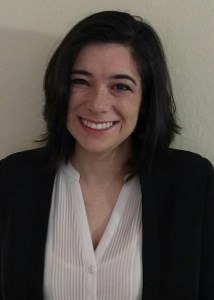
Hannah Munoz

Samantha Grant
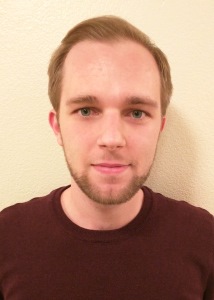
Matthew Salivar
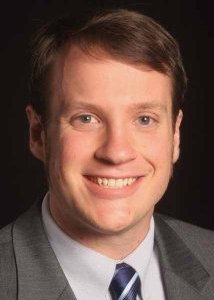
Royal Stewart

Vinh Le

Eric Fritzinger
Design of a Supercritical Carbon Dioxide Brayton Cycle for Solar Dish Concentrator Energy Production
Authors – Danielle Nobles-Lookingbill and Robert Boehm
University of Nevada, Las Vegas
As evidenced by solar flux mapping, a solar dish concentrator with a parabolic arrangement mirror system is used to generate 100 kW of solar flux. The solar flux concentrated by this dish is used to replace fossil fuels as the heat source for a clean power generation cycle. Component design and configuration for a Brayton cycle using supercritical carbon dioxide as the working fluid is paramount for achievability and efficiency in this study. Computer modeling has provided benchmarks for system component design, while material and machining constraints provide upper and lower limits. Testing has shown that the solar concentrator dish is achieving solar concentration ratios of over 220 suns, providing experimental receiver temperatures over 950 C in less than five minutes. It is found that the receiver is able to withstand these temperatures without negative effects. Development of a turbo-compressor with modularity is in the final design stages. This new modular design allows for optimization redesign of each section in the turbo-compressor without the need to re-machine the entire unit.
Estimating Solar Panel Degradation due to Aerosol Deposition using Discrete Dipole Approximation
Authors – Patricio Piedra and Vicken Entyemezian
Desert Research Institute
Experiments reveal that aerosol deposition decreases the efficiency of solar panels. Many optical aspects of these losses of efficiency are not well understood since they are related to the microphysics of the particle substrate system. These effects not only could result in revenue losses on Earth, but also could be disastrous to a space mission relying on solar power in a dusty planetary environment such as Mars. In this study, we explore the viability of using discrete dipole approximation (DDA) as a method to simulate the particle-substrate system. Initial theoretical results indicate that for spherical particles in free space, DDA does match the extinction and scattering efficiency calculated by Mie theory. Similarly, we applied DDA to a particle-substrate system where the substrate had its index of refraction n = 1.0001, approximately equal to that of free space. Our results indicate that the backscattered phase function matched the expected behavior as calculated by Mie theory. Finally, we have taken spectral measurements of hematite deposited on glass slides, and we are currently working on being able to predict the light transmission of this system. In future work, we expect to match the light transmission behavior of the hematite-glass system, and then conduct an extensive study with several variations of glass and dust properties. Our study has the potential to predict solar cell performance during particle deposition as needed for solar power forecasting and optimization of cell cleaning schedules and procedures.
Chemical Characterization of Dust Deposition in an Arid Environment
Authors – Jason Sylva and Spencer Steinberg
Chemistry and Biochemistry Department
University of Nevada, Las Vegas
Dust can impact the efficiency of solar energy collection devices and in some arid environments, dust can reduce solar energy efficiency up to 30%. Reducing the impact of dust is critical in the expansion of solar technology throughout regions where solar energy is utilized. Characterization of suspended particulate can assist in developing strategies for dust mitigation. With the characterization of suspended particulate in remote, rural and urban environments, more informed decisions can be made regarding the selection of coating material on solar panels and in developing cleaning and maintenance procedures. Particulate matter that deposits on a solar surface can potentially interact with solar radiation, precipitation or even directly with the surface material itself. These interactions could lead to the formation of compounds that reduce/block radiation and/or degrade the integrity of the surface. Preliminary characterization of dust could play a vital role when planning the construction of a solar energy facility.
A variety of sampling techniques were employed to obtain particulate matter for characterization. These included direct collection of suspended airborne particulate from solar surfaces, tacky dot slides, desert vugs as well as high volume air sampling. High volume air sampling was performed using glass fiber filters and 2 micron stainless steel. Direct collection was performed by sampling from a solar surface, a vug, or by collection onto a glass surface. Collection onto glass surfaces was achieved by setting up a plane microscope slide, a tacky dot slide, and normal pane of glass.
The sampling methodology allowed for the collection of samples for analyses using various analytical methods that included raman microspectroscopy, pyrolysis gas phase-chromatography, ion chromatography and scanning electron microscopy. These various methods will allow for identification of organic and inorganic components as well mineral distribution of suspended particulate material.
Water Treatment for Solar Panel Cleaning using Membrane Distillation
Authors – Coral R. Taylor and Sage R. Hiibel
Department of Civil and Environmental Engineering
University of Nevada, Reno
Direct contact membrane distillation (DCMD) is an emerging treatment option for brackish waters and some industrial wastewaters. DCMD utilizes a microporous, hydrophobic membrane that allows the transport of water vapor while rejecting non-volatile contaminants such as salts and minerals. It is driven by the difference in partial vapor pressure across the membrane that is generated by the temperature difference between the hot, dirty feed water and the cool, distilled product water. Key advantages of DCMD are that it operates at low pressures, can use waste heat or solar heat sources, and can maintain efficacy at very high salt concentrations.
The NV Solar Nexus Water Team’s objective is to develop sustainable and advanced water/wastewater approaches to support the water needs of solar energy development and to use solar energy to process water. As part of this, a small pilot-scale DCMD system is being designed and fabricated. The system has a novel, stacked flat-sheet design that provides greater flexibility than conventional hollow fiber configurations. The “Nevada Solar & Water Express”, a mobile water treatment trailer, will house the DCMD system and a variety of state of the art and standard water technologies, and will be used on-site at solar energy facilities in Nevada. The trailer will also serve as an educational demonstration unit to raise STEM awareness.
To date, a bench-scale DCMD system has been used to test a large number of membranes for use in the pilot-scale system and the membranes have been characterized for hydrophobicity; this data will be used to validate a computational DCMD model being developed by other members of the NEXUS project. Synthetic panel rinse waters containing surfactants have been tested and were found to be detrimental to the DCMD membranes, verifying the need for non-surfactant based cleaning methods
Landscape Genomics of the desert kangaroo rat (Dipodomys deserti) and Merriam’s kangaroo rat (Dipodomys merriami)
Authors – Cirena Torres and Brett Riddle
University of Nevada, Las Vegas
This research will focus on the landscape genomics of two congenic and codistributed Kangaroo rats: desert kangaroo rat (Dipodomys deserti) and Merriam’s kangaroo rat (Dipodomys merriami). Merriam’s kangaroo rat is a substrate generalist and the desert kangaroo rat is a sand specialist. This research will test for potential dispersal barriers, population structure, and selection. This study will also take into consideration the dynamic character of desert kangaroo rats and include climatic models. Many samples for genetic analysis are available in our lab but more will be collected. Next generation sequencing methods and various statistical tests will be used to examine habitat and population structure of the kangaroo rats. The desert kangaroo rat is a species of concern for which fragmentation, connectivity and genetic analysis studies are needed. Merriam’s kangaroo rat which has a more widespread distribution will serve as a good comparison species. Both of these species occupy areas where solar development is expected and where there are existing facilities. There are very few studies that have investigated the impacts of solar energy development on animals. This study has the potential to contribute to utility scale solar energy development impacts on wildlife.
A New Workflow for Interacting and Visualizing Big Data for Web Applications
Authors – Rui Wu, Sergiu Dascalu and Fred Harris
University of Nevada, Reno
Interaction and visualization are two significant methods for both business people and scientists to find “gold nuggets” buried in raw data. These two methods can help understand complex theories and make it easier for people from different research areas to cooperate. Many prevalent web-based data interaction and visualization tools and libraries are not as effective as before because of big data. Most of the traditional client/server web application visualization tools and libraries process visualization and interaction on the client side. This workflow requires the server side to transfer data to the client side. If the data size is very large, the data transferring time is unbearable. In this poster, we propose a fast and new method for client/server web application to interact with and visualize big data. The method visualizes data on the server side with multiple CPU cores and transfers resulting images to the client side. The client side collects users’ interaction information and the server side updates visualization results based on the interaction information. We tested the workflow with large volume datasets and the results have been promising in terms of faster speed than with traditional workflows.






